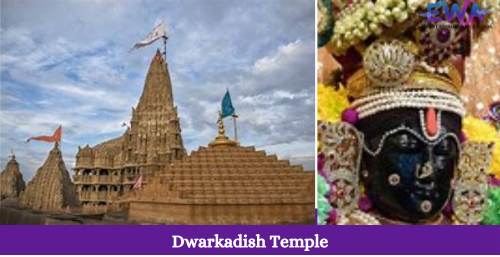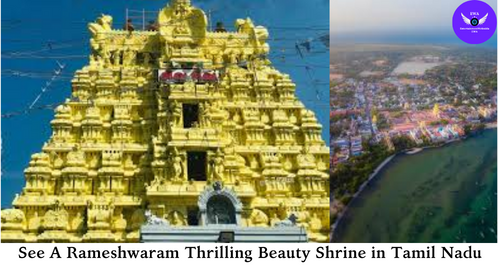Dwarkadhish Temple The Eternal Abode of Lord Krishna Read Now
Dwarkadhish Temple
One of the most venerated temples in India is the Dwarkadhish Temple, a representation of dedication and trust. As the residence of Lord Krishna, it is deeply spiritually significant and is tucked away in Gujarat’s historic city of Dwarka. Let’s examine this amazing temple’s history, customs, and commonly asked questions.

History of Dwarka and Dwarkadhish Temple
Dwarka: A Legendary City
Lord Krishna is credited with founding Dwarka, one of India’s seven oldest sacred cities (Sapta Puri). According to Hindu mythology, Krishna relocated from Mathura to Dwarka in order to defend his subjects against Jarasandha, the ruler of Magadha, who had been attacking them frequently.
According to legend, after Krishna left the mortal realm, he constructed a golden metropolis that eventually sank beneath the sea. These tales are supported by archeological discoveries close to the modern-day Dwarka, which combines mythology and history.
The Dwarkadhish Temple Origins
Dwarkadhish Temple, also called Jagat Mandir, is devoted to Lord Krishna, who is revered as the “King of Dwarka.” Despite being renovated in the 16th century, the existing temple is believed to have been established about 2,500 years ago.
Located on the banks of the Gomti River, the temple is a magnificent example of Chalukya architecture. Its sanctuaries, spires, and walls are all finely carved, making it a work of devotional art.
Key Highlights of Temple
- Architecture: The temple is supported by 72 pillars and has five stories. The principal spire, Shikhar, rises to a height of 78.3 meters.
- Flag Ceremony: Devotees avidly observe the temple’s custom of changing its flag, which is embellished with images of the sun and moon, five times per day.
- Sacred Steps: The 56 steps that go to the river at the temple’s Gomti Ghat represent a spiritual fall.







Pingback: Thaipusam Across the World Its a Celebration of Unity